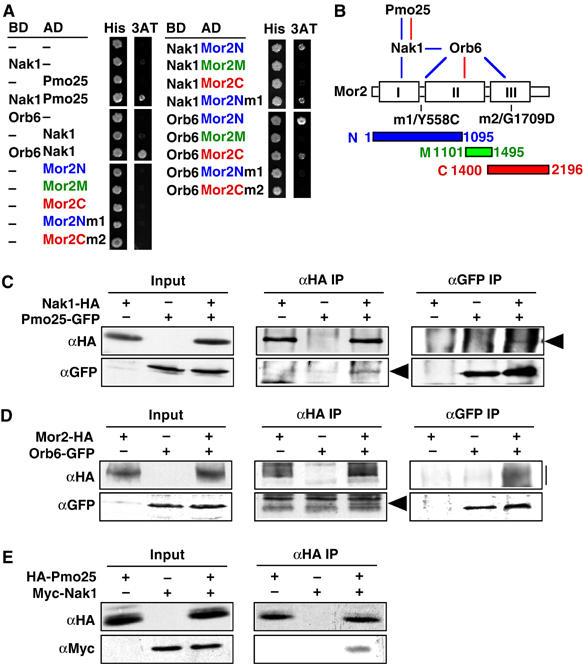Figure 2.

Physical interactions among the proteins. (A) Protein–protein interactions were examined using the yeast two-hybrid system. S. cerevisiae Y190 (104 cells) cells transformed with Gal4-binding domain-fused (BD) and Gal4 activation domain-fused genes (AD) were spotted on SD containing histidine (His) or 3-aminotriazole (3AT). (B) A summary of the physical interactions observed is depicted by blue (two hybrid) and red lines (IP). The boxes in Mor2 indicate the homologous regions among Furry-like proteins (Hirata et al, 2002). (C, D) Extracts of S. pombe cells expressing Nak1-HA and/or Pmo25-GFP (C), or Mor2-HA and/or Orb6-GFP proteins (D) from the chromosomal native promoter were immunoprecipitated with anti-HA or anti-GFP antibodies. Precipitated materials were then immunoblotted using antibodies against HA and GFP. The arrowhead and bar indicate the position of the immunoprecipitated proteins. (E) Pmo25 binds to Nak1 in vitro. Binding of bacterially expressed HA-Pmo25 and Myc-Nak1 proteins was assayed by co-immunoprecipitation. The protein mixture was immunoprecipitated with anti-HA antibody. Precipitated materials were then immunoblotted using antibodies against HA and Myc.
